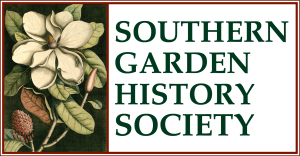
Credit: VCU Libraries Commons, via Wikimedia Commons and Flickr Commons.
In days long-ago, this author was a history student at Richmond’s Virginia Commonwealth University, and visits to nearby Hollywood Cemetery offered bucolic relief from the grind of test-taking and paper-writing. Set just above the James River and next to the city’s fascinating Oregon Hill neighborhood, Hollywood provided students a spot not only for a relaxing walk but also a place where grave markers taught a supplemental lesson in Virginia and U.S. history. For those of us who packed in as many of the school’s excellent art history courses as possible, Hollywood’s wide array of monuments represented not only sculptural artistry, but they also displayed the various architectural fashions popular over Hollywood’s history. It was definitely a “don’t forget my camera” type of place.
Society members have come to know Hollywood Cemetery through several Magnolia articles along with a visit in person during an annual meeting. Among the former, a Winter 2012 lead article by Past President Jim Cothran and architectural historian Erica Danylchak offers the greatest amount of detail, as the authors discuss what they term “A Quintessential Garden Cemetery of the 19th Century.”* Several other essays reference the rediscovery of the musk rose, Rosa moschata, at Hollywood, rosarian Liz Druitt telling the story in her “Cherchez le ‘Musk’” lead article in the Spring 1994 issue.** Complementing these readings was a June 2012 walk-about offered during the Richmond-based Society meeting organized through the guidance of then president, Dean Norton.
What they experienced was the often steep, rolling terrain typical of that part of Richmond north of the James. Here, site work had begun in the late 1840s under the leadership of prominent local citizens, Joshua Fry and William Haxall, the two having been inspired by a visit to the famed Mount Auburn Cemetery outside Boston. (As Cothran and Danylchak note in Magnolia, Mount Auburn, in turn, had come about under the influence of the Père Lachaise Cemetery in Paris.) Key to Hollywood’s ultimate appearance were the designs and directions provided by Scottish-born architect and landscape gardener John Notman.*** Having emigrated to America, Notman had gained wide-spread respect for his 1830s work at Laurel Hill Cemetery in Philadelphia, his new home town. He would go on to design numerous homes in the region, often set within picturesque grounds, while Hollywood (a name suggested by Notman) would join Laurel Hill as his two great burying-place achievements.
Beginning with a forty-two acres wooded site, Hollywood would subsequently expand to its current 135 acres. As with other “garden cemeteries,” it was to be an immediate success, becoming both a fashionable spot to bury loved ones and a popular place for refreshing strolls. Visitors thus found themselves walking along its many curving carriage ways while being shaded by a variety of trees that Notman allowed to remain in place. To be enjoyed as well were the numerous low-growth woody and flowering plants being installed, these coming to include the roses for which Hollywood would gain fame and which have claimed the attention of several Magnolia writers.
Readers attuned to dates will know that these early developments were taking place on the eve of the Civil War, and, being the Confederate States capital, Richmond was often at the center of bloody fighting. The city’s “grave garden” would thus quickly become the burying place for hundreds, and then thousands, of Southern soldiers lost to battle and disease, giving Hollywood a strong military cemetery quality. The actual number of Confederate dead there is uncertain, though it is probably no less than sixteen thousand and includes numerous high-ranking officers.
Hollywood is also famed as the last resting place of two U.S. presidents, James Monroe and John Tyler. SGHS annual meeting visitors will doubtlessly recall Monroe’s elaborate Gothic cast-iron grave enclosure, a feature dating to 1857 and recently restored to its original ivory color. (Other, slightly less elaborate, examples of the ironwork for which Richmond was well known still remain as signature features at Hollywood.) To be found here also is the gravesite, marked by his statue, of Confederate States president, Jefferson Davis, who was reinterred at Hollywood in 1893 less than two years after his initial burial in New Orleans.
While the markers of long-ago presidents may stand out for their artistic excellence as well as the historic persons they commemorate, Hollywood’s display of gravestone art is spread widely across its many acres and thus is not limited to famous leaders. When this is joined to its seasonally-changing floral array the appellation “quintessential” used by Cothran and Danylchak is indeed no exaggeration when applied to Hollywood Cemetery.
**********************************************************************
*https://southerngardenhistory.org/wp-content/uploads/2015/12/Magnolia_Winter_2012-1.pdf#page=1. For an “in-print” discussion of the book that resulted from their collaboration, see: https://southerngardenhistory.org/wp-content/uploads/Magnolia_WinterSpring2018.pdf#page=14
** https://southerngardenhistory.org/wp-content/uploads/1994-Spring-Vol.-X-no.-3.pdf#page=1
***For greater detail on Notman, see: https://www.philadelphiabuildings.org/pab/app/ar_display.cfm/26273


Leave a Reply